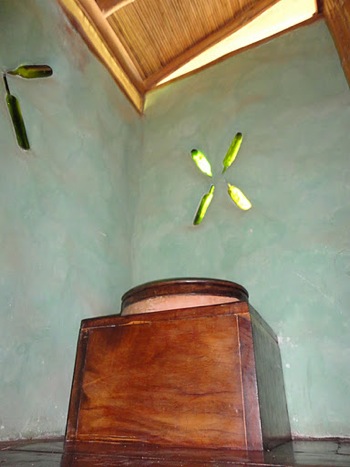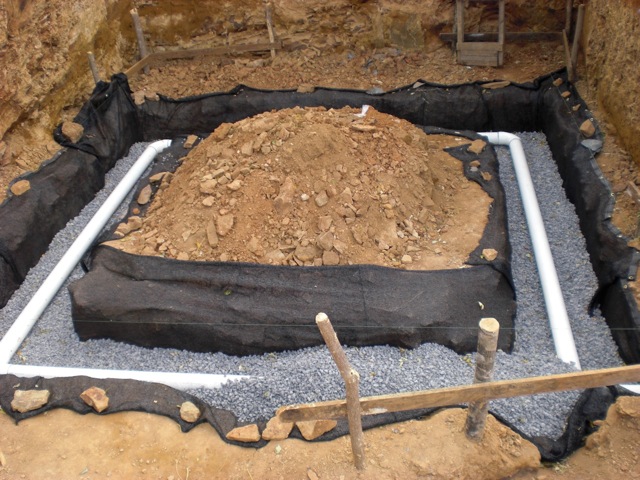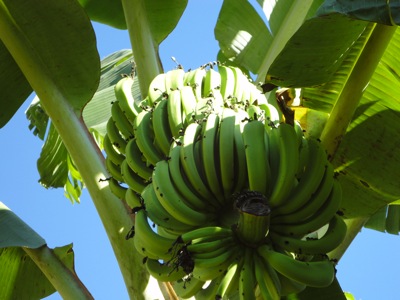Supplementary Systems
Casa de Tierra implements supplementary green systems because we believe that the synergistic design of progressive technologies will produce a more comprehensive result.
Composting Toilet:

A composting toilet is a dry toilet that utilizes a predominantly aerobic processing system to treat human excrement via managed decomposition, rather than routing the excrement to waste treatment facilities or septic tanks via water flow. The excrement, a nitrogenous matter, is normally mixed with carbon sources and alkaline amendments, such as sawdust and lime, to support aerobic processing, absorb liquids, and reduce odor. Bacteria that thrive at the high temperatures the carbon and nitrogen generate, oxidize and break down the waste into its components, some of which are consumed in the process, reducing volume, and eliminating potential harmful pathogens.
We include urine-separators in our toilet units because we believe that moisture levels should be controlled throughout the composting process. The rerouting of the urine assists in maintaining heat in the compost bin, further aiding in decomposition and controlling odors. The nitrogenous urine can then be used as a fertilizer to aid in plant growth.
Proper ventilation is also required to maintain the system, and we install piping to move air from the waste container.
Frequency of emptying the bin will depend on the speed of the decomposition process and capacity. With a properly sized and managed unit, a much smaller volume of a humus-like material results.
We believe in installing our composting toilets where otherwise unsanitary outhouses may be erected. Water contaminated with human excrement puts people at a high risk of cholera, dysentery, diarrhea, jaundice, typhoid, polio and intestinal worms. A dry composting toilet protects water and soil from sewage pollution, and therefore helps protect people of the community.
In addition to conserving water and protecting soil, Casa de Tierra's composting toilet options are attractive, clean, hygienic and odor-free.
Greywater Systems:

Greywater is generated from domestic activities such as laundry, dishwashing, and bathing, and it makes up 70-90% of residential wastewater. An efficient alternative to recycling greywater is using it to irrigate plants, which reduces demand on conventional water supplies, pressure on sewage treatment systems, and energy use and chemical pollution from treatment. The plants use nutrients of greywater, such as food particles, in their growth, which in turn nourishes the topsoil and increases plant growth.
Casa de Tierra implements greywater harvesting and irrigation techniques to reduce, reuse and recycle this valuable resource.
Rubble Trench Foundation / Floating Foundations:

Acclaimed architect Frank Lloyd Wright was a firm advocate of rubble trench foundations and successfully incorporated them into his designs for over 50 years. These systems are a high-quality, economical, seismically-effective, and environmentally conscious alternative to conventional concrete foundations.
This single substructure can bear the heavy structural loads imposed upon it, while also ensuring good drainage and a secure connection to the earth. It is constructed by excavating to solid, undisturbed ground to create a trench along the footprint of the building. The trench is set below the frost line (if applicable) and is graded to daylight, ensuring that water is directed away from the structure. Filter fabric is laid, PVC piping is routed, and washed loose stone or rubble is compacted into the trench.
In high seismic zones, a reinforced concrete grade beam is then cast directly upon the stone fill in order to distribute the building load evenly across the gravel footer. This allows the structure to move and release tension when confronted with seismic activity, as "monolithic bearing walls on floating foundations weather earthquakes better than post and beam construction on separate footings."1
Sustainable Landscape Design:

In designing a sustainable garden, Casa de Tierra strives for a holistic approach, aiming to preserve, conserve and regenerate natural resources.
We encourage balance and productivity between a garden and the natural environment, believing that man-made landscapes should emulate the natural processes that sustain the ecosystem.
Toward this end, we observe various interactive design techniques that include nurturing climate-appropriate and inter-plant relationships; creating natural windbreaks to lower soil erosion and foster plant growth; planting trees to provide shade, thereby cooling a habitat; water conservation efforts, such as drip-irrigation systems to reroute greywater and encourage plant development; erosion and sediment control practices, such as berming on contour; on-site composting of waste to provide soil nutrients; food production; and soil growth and fertility.
1 Earth Architecture and Ceramics: The Sandbag / Superadobe / Superblock Construction System by Nader Khalili and Phill Vittore

